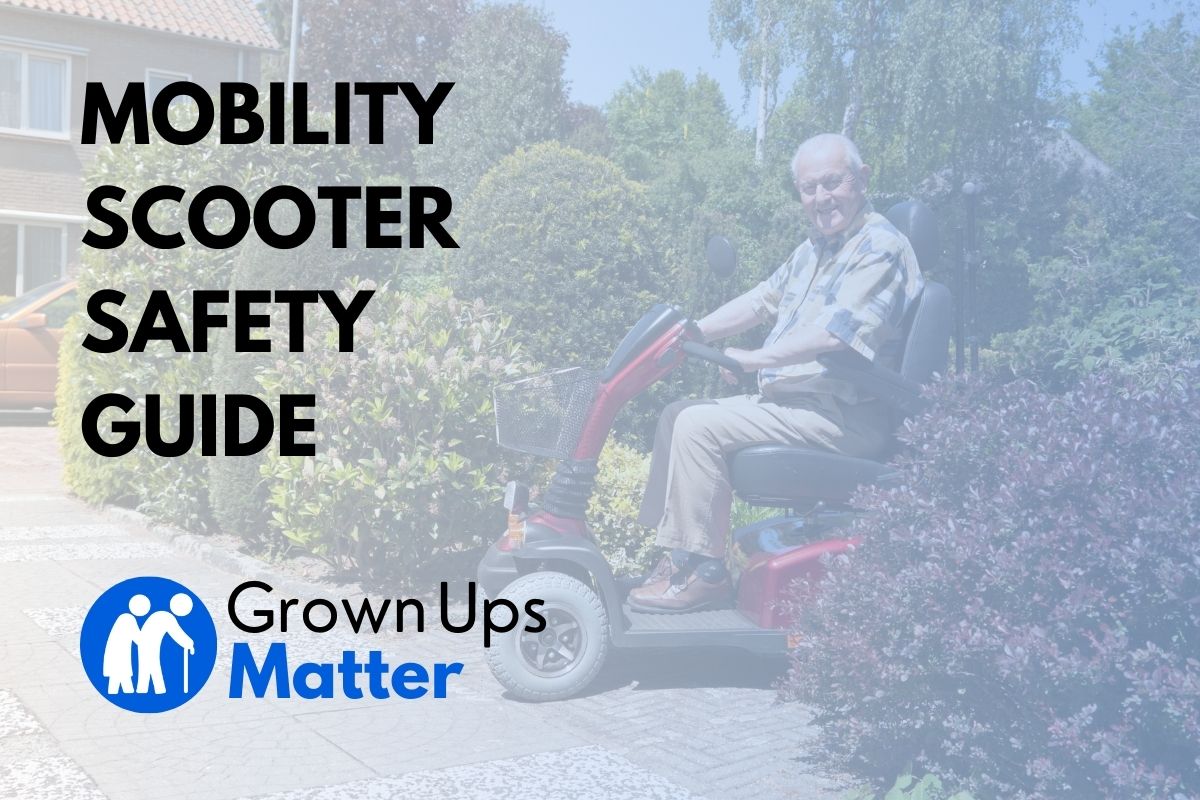More and more people are discovering the freedom that mobility scooters can provide.
From those with disabilities to senior citizens who just need a little assistance getting around, these devices offer a new lease on life.
But along with this newfound independence, comes the need for safety. Mobility scooters, while beneficial, can also pose risks if not used correctly.
This comprehensive guide provides 15 important safety tips for mobility scooter users.
Following these guidelines will help ensure you stay safe while enjoying your mobility scooter.
Key Takeaways
- Understanding Your Scooter: Familiarize yourself with your scooter’s operation and features. Know the limits of its speed, weight capacity, and battery life. Each scooter is different, and understanding these differences is the first step to using it safely.
- Proper Maintenance: Regular maintenance is crucial for safe scooter use. This includes checking tire pressure, brakes, and battery status. The better your scooter is maintained, the safer it will be.
- Safe Driving Practices: Always follow the rules of the road. This includes respecting traffic signs, using hand signals, and staying on sidewalks or designated scooter lanes whenever possible. Remember, you’re part of traffic, too.
- Be Visible: Make sure you’re easily seen by others, especially motorists. Use lights and reflective materials, especially in low-light conditions. Your visibility is key to your safety.
- Wearing Safety Gear: Protective gear isn’t just for bicyclists. Helmets, elbow pads, and knee pads can help protect scooter users from injury, particularly in the event of a fall or collision.
1. Understanding Your Scooter
Before taking your scooter out for a ride, take some time to thoroughly understand its functions and capabilities. This might involve reading the user manual, asking for a demonstration from the retailer, or doing some research on your own. The more you know about your scooter, the better prepared you’ll be to operate it safely. Familiarize yourself with the control panel, learn how to adjust the speed and know how to engage the brakes.
It’s also crucial to understand your scooter’s limitations. For instance, know the maximum weight it can handle, its top speed, and how long its battery can last. If you’re unsure about these, you can find information on the different types of mobility scooters on Grownups Matter.
2. Proper Maintenance
Proper maintenance is vital for the safety and longevity of your mobility scooter. Regularly check the tire pressure, as improper inflation can affect maneuverability and could even lead to tire blowouts. The brakes should also be tested frequently to ensure they’re functioning properly.
Battery maintenance is another critical area. Make sure to charge your battery fully before heading out, and keep an eye on the battery life while you’re out and about. In case your scooter stops suddenly due to battery issues, you can refer to this mobility scooter troubleshooting guide for assistance.
Remember, a well-maintained scooter is not just reliable, it’s also safer to use.
3. Safe Driving Practices
When operating your mobility scooter, remember that you’re part of the traffic. Even if you’re on the sidewalk or in a pedestrian area, you need to respect certain rules. Pay attention to traffic signals and signs. Always give pedestrians the right of way, and never try to overtake other mobility device users in a dangerous or rushed manner.
If you need to cross the street, look both ways for traffic, and cross only when it’s safe. And when riding on the sidewalk or a shared pathway, keep to the right to allow others to pass safely.
For more guidance, check out this comprehensive mobility scooter driving guide.
4. Be Visible
Your visibility is vital when operating a mobility scooter. This is especially true in low-light conditions or during poor weather. Make sure your scooter has working headlights and tail lights, and consider adding reflective stickers or wearing a high-visibility vest.
It’s also important to make eye contact with motorists, cyclists, and pedestrians when crossing paths or making turns. This ensures others are aware of your presence and can act accordingly.
Read more about how to use mobility scooters on the sidewalk to further ensure your safety.
5. Wearing Safety Gear
Wearing safety gear is as important for mobility scooter users as it is for cyclists. A helmet can protect your head from injury in case of an accident, while elbow and knee pads can shield against scrapes and bruises.
While mobility scooters are generally safe to use, accidents can still happen. So, ensure you’re prepared and protected. Always prioritize your safety and well-being, and don’t overlook the importance of protective gear.
6. Understand the Controls
Every mobility scooter comes with a variety of controls that users need to learn and understand to ensure their safety while driving. Understanding the controls of your scooter is a vital aspect of safely navigating your environment.
Understanding the Throttle
The throttle control lever is what you use to drive your scooter forward or backward. To move, push or pull the lever and adjust the speed using the speed adjustment dial. Never adjust the speed abruptly as it can cause loss of control. For more detailed insights about operating a mobility scooter, consider reading this comprehensive Mobility Scooter Driving Guide.
Familiarize with the Brake
Most mobility scooters come with automatic brakes that engage when you release the throttle lever. However, it’s crucial to get comfortable with how quickly your scooter stops when the brake is engaged. Practicing in a safe, open area can help you understand the stopping distance of your scooter.
7. Be Aware of Your Surroundings
Whether you are on a sidewalk, in a store, or at home, being aware of your surroundings is an essential part of safety. Always look out for obstacles or potential hazards that could make it hard for you to maneuver the scooter.
Be Mindful of Pedestrians
Especially when using your scooter in public places, it’s crucial to be mindful of pedestrians. Yield the right of way to those on foot and try to maintain a safe distance from others whenever possible. If you’re navigating through crowded areas, consider these tips on how to Use Mobility Scooters in Shops.
Consider the Surface
Always pay attention to the type of surface you’re driving on. Uneven surfaces, slopes, and obstacles can all present challenges. It’s also essential to know that some surfaces can impact the traction of your scooter. If you live in a colder climate, find out how to Use Mobility Scooter on Snow and Ice.
8. Regular Maintenance and Troubleshooting
A well-maintained mobility scooter not only ensures a smoother ride but also significantly reduces the chances of accidents. Regular checks on the scooter’s battery, tires, and controls can go a long way in preserving its optimal condition.
Battery Care
Taking good care of the battery extends its lifespan and performance. Always make sure it is fully charged before venturing out and monitor its health. This article provides detailed information on Mobility Scooter Battery Care.
Troubleshooting
Sometimes, your scooter may experience problems. Understanding basic troubleshooting techniques can help address minor issues before they become major. Consider familiarizing yourself with this Mobility Scooter Troubleshooting Guide.
9. Secure Your Scooter Properly
It is crucial to ensure that your mobility scooter is secure, both while you’re using it and when it’s parked. A properly secured scooter reduces the risk of theft, accidents, and damage.
During Travel
If you are traveling with your mobility scooter in a car or public transport, it needs to be secured to prevent movement. Some tips on how to secure your scooter during travel can be found here: Can Mobility Scooters Fit in a Car or SUV.
When Parked
When leaving your scooter unattended, ensure it’s parked in a secure location and the key is removed. This not only helps deter theft but also prevents accidental activation.
10. Use Appropriate Safety Accessories
Using appropriate safety accessories can greatly enhance your safety on a mobility scooter. From helmets to visibility flags, each accessory plays an important role in ensuring you stay safe.
Helmets
While not always mandatory, wearing a helmet while operating a mobility scooter is highly recommended, especially if you’re driving on roads or uneven terrains.
Visibility Aids
Visibility aids like reflective strips, lights, or flags can help make you more noticeable to others, especially in low-light conditions. More on safety accessories can be found in this article about the Best Common Mobility Scooter Upgrades.
11. Understand the Rules of the Road
For those using mobility scooters on the road, understanding traffic rules is a must. It is equally important to know the local laws and regulations concerning mobility scooters.
Driving on the Road
There are specific rules for driving mobility scooters on the road. Before you head out, familiarize yourself with these guidelines detailed in this article: Mobility Scooters on the Road.
Legal Regulations
Every region has its own regulations regarding the use of mobility scooters. Ensure you understand these local laws to avoid penalties and to ensure your own safety.
12. Do Not Overload Your Scooter
Each mobility scooter has a maximum weight limit, which includes the user’s weight, any shopping, and additional items. Overloading can damage the scooter and impact its balance, increasing the risk of accidents.
Knowing the Limit
Refer to the user manual of your scooter to find out the weight limit and adhere to it strictly. Information on different weight capacities can be found in the article about Mobility Scooter Size and Weight.
Managing Shopping
If you plan to do some shopping, keep in mind the weight of the items you buy. A small trailer or attaching a basket to your scooter can help manage extra loads.
13. Safeguard Against Weather Conditions
Weather conditions can significantly affect your safety while using a mobility scooter. Rain, snow, and extreme temperatures can all impact the performance of your scooter and should be considered when planning your journey.
Driving in Rain
If you must drive in the rain, take precautions to protect both yourself and the scooter. More on how to safeguard your mobility scooter in the rain can be found in this article: Using a Mobility Scooter in the Rain.
Managing Extreme Temperatures
Both extreme heat and cold can impact the battery performance of your scooter. Consider these tips to Extend Your Mobility Scooter Range during extreme weather conditions.
14. Use Seatbelts Where Provided
Some mobility scooters come equipped with seatbelts, and using them can enhance your safety, especially when traveling on slopes or uneven surfaces.
Why Use Seatbelts
Seatbelts help keep you securely seated in the mobility scooter. This reduces the risk of falls and injuries. Check out this article to learn more about Mobility Scooters and Seatbelts.
15. Insurance and Warranty
Finally, having appropriate insurance for your mobility scooter can provide protection
against damage, theft, and accidents.
Insurance
While not always required, insurance can provide financial protection in case of accidents, damage, or theft. Here are some things to consider when choosing Mobility Scooter Insurance.
Warranty
A warranty can provide you with peace of mind, knowing that your scooter is covered for certain types of repairs and servicing.
Be sure to understand the terms and conditions of your scooter’s warranty.
All the claims made in this article are only for informational purposes, based on the writer’s experience and not clinical advice. You should always consult your physician or physical therapist if you have any doubts about how this applies to your specific case.

Mallory is an occupational therapist with a passion for helping the elderly maintain their independence and mobility. After working in the field for several years, she decided to start sharing her knowledge and experience with a wider audience. Through this site, Mallory offers practical tips and exercises to help seniors improve their mobility and manage any limitations they may have. She is dedicated to providing accessible and effective resources to help her readers lead happy and healthy lives.

